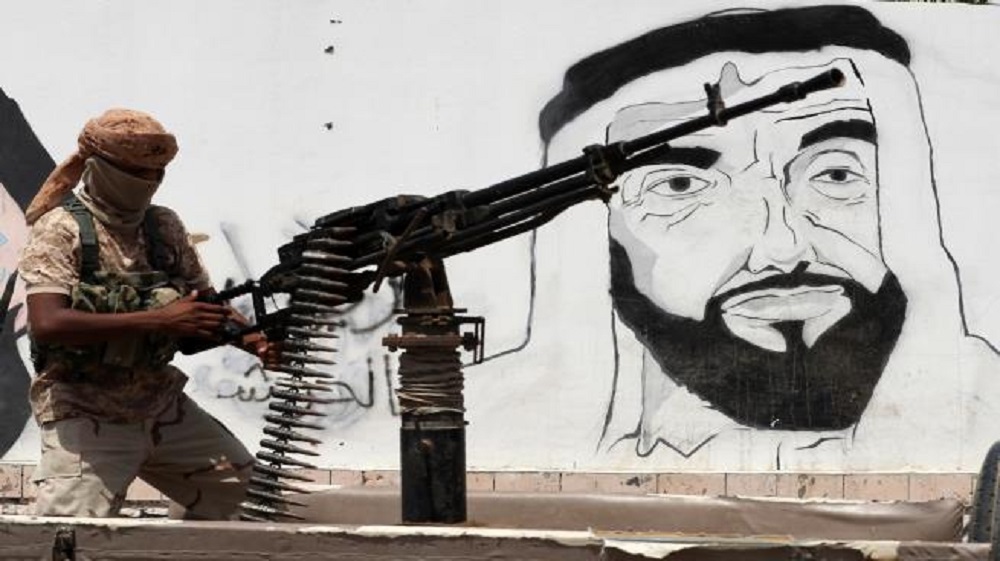The UAE’s Strategic Role in Yemen: Militarizing Salafi Groups and Reshaping the Conflict
How Emirati-backed Salafi brigades transformed from a peaceful movement into an armed force, altering Yemen’s war dynamics and state institutions.

Watan-The UAE has taken on an extremely dangerous role as an international proxy supporting extremist groups in Yemen, which threatens the country with profound consequences for both its present and future.
The Yemeni channel “Belqees” highlighted that for decades, the Salafi movement remained committed to peaceful means and gained significant popular support from communities eager for a disciplined religious environment. However, following the Houthi coup and the military intervention of the Saudi-Emirati coalition, a new phase began.
After a segment of the Salafi movement engaged in armed activities, transforming into an armed faction that imposes its control and ideology by force, the intellectual and ideological debates that once defined it have ceased to exist in the same manner.
The Salafi brigades, supported by Saudi Arabia and the UAE, serve as evidence of this transformation, shifting from a peaceful religious movement into an armed force as part of a long-term strategic Emirati plan. This military empowerment has made these brigades a key player in Yemen’s complex landscape.
Emirati Recruitment
Journalist Waddah Atta explains that after the assassination of Major General Saif Al-Yafei, who was the commander of the Fourth Military Region and was supposed to lay the foundation for a legitimate national army to lead the battle against Houthi militias on the western coast following the liberation of Aden and its surroundings, the idea of creating a true national army loyal to the Yemeni state was abandoned. The war effort was supposed to be unified under one banner, one leadership, and one homeland.
He added: “The factions have since become entangled, with the UAE imposing its own vision by supporting specific groups and directions. As a result, the Giants Brigades and the Salafi movement have significantly expanded through mass recruitment in battalions and militias.”
He continued: “Almost everyone wanted to fight the Houthi militia, so recruitment was opened on a large scale. Many battalions joined this movement, particularly from Al-Hudaydah and Tihama, integrating into what became known as the Tihama Resistance Brigades and the Elite Military Brigades—both prepared by the UAE, similar to what it did in Aden, Shabwa, and Hadramout.”
A Western-Approved Plan
Dr. Abdulbaqi Shamsan, a sociology professor at the University of Sana’a, states that Salafi groups and their evolving presence in the region stem from various ideological roots. For example, the “Madkhali” Salafi current claims to be apolitical and insists on absolute obedience to the ruler, while other Salafi factions include jihadist and leadership-oriented movements.
He added: “These Salafi groups justify foreign intervention because they adhere to obeying the ruler in all matters. This places them in opposition to both the Houthi movement and extremist jihadist groups.”
He continued: “There were Madkhali Salafi factions in Libya, as well as in Yemen, represented by figures like Abu Al-Abbas. Since these factions obey the ruler, they have been allowed to expand their influence. Consequently, Yemeni state institutions, including the presidency, parliament, judiciary, and government, have been weakened, limiting their ability to exercise sovereignty.”
He further stated: “These factions first weakened state institutions and then targeted the national army, leading to the creation of multiple military entities such as security belts, elite forces, and republican militias, resulting in fragmented military components.”
He elaborated: “The most crucial factor in Arab and Islamic countries undergoing transitions is the religious aspect. Ideological groups that blend religion and politics, such as the Islah Party, have been systematically undermined and replaced by Madkhali Salafi groups.”
He continued: “To counterbalance Iranian-backed or Shiite groups, multiple factions had to be created. Thus, an ideological group like the Muslim Brotherhood (Islah Party) was established, alongside an armed faction to confront both it and the Houthis—indicating a premeditated strategy.”
He added: “When a society is divided—struggling with economic hardship, daily survival concerns like gas shortages and unpaid salaries—it becomes exhausted. At this point, the religious aspect becomes highly significant.”
He noted: “The use of Salafi groups began as early as the First Gulf War, where they justified American intervention in Iraq, the Gulf coalition’s targeting of Iraq, and the American presence in the region. They were mobilized for this purpose from the start.”
He concluded: “Today, we have extremist jihadist Salafi factions, conventional Salafi factions, a weak state, a fragmented military, competing entities, multiple religious authorities, groups that reject governance, and others that are powerful and supportive of it. The society itself is exhausted. All of this has been pre-planned, and even the Western world approves of it. Since the occupation of Iraq, there has been a strategy to revert the region to pre-state identities—seen in Iraq’s division into Sunnis, Shiites, Kurds, and others.”
He explained that the Madkhali Salafi factions, particularly those in liberated areas, do not view foreign intervention—whether Emirati, Saudi, or Western—as contradicting their religious beliefs. Instead, they justify it and consider obedience to the ruler obligatory, whether that ruler is Gulf-based or Yemeni.






